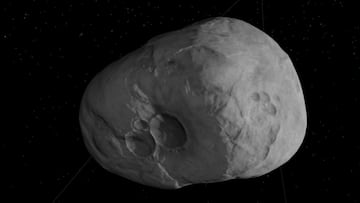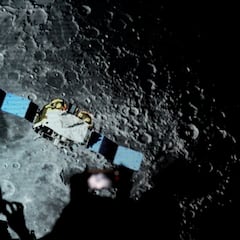Possible asteroid to hit earth in 2046 according to NASA reports
The US organization is monitoring the body called 2023 DW that has a “very small chance” of colliding with our planet in 23 years.


Asteroid impact is a possibility, albeit remote, as per NASA’s warning of a “very small chance” of a newly detected asteroid colliding with Earth in 23 years. The asteroid in question has a probability of hitting our planet on February 14, 2046, potentially ruining Valentine’s Day for future generations of romantics.
What are the chances of asteroid 2023 DW hitting Earth?
The European Space Agency has estimated the likelihood of impact to be 1 in 625, while NASA’s Jet Propulsion Laboratory’s (JPL) Sentry system places it at 1 in 560. As some sort of comparison, your chances of getting hit by lightning are about 1 in 15,000, while dying in a plane crash is 1 in over 10,000,000 and then death by shark is somewhere between 1 in 3.7 million and 1 in 7 million depending on your proximity to the sea.
We've been tracking a new asteroid named 2023 DW that has a very small chance of impacting Earth in 2046. Often when new objects are first discovered, it takes several weeks of data to reduce the uncertainties and adequately predict their orbits years into the future. (1/2) pic.twitter.com/SaLC0AUSdP
— NASA Asteroid Watch (@AsteroidWatch) March 7, 2023
The solitary item featured on NASA’s risk list is a rock named 2023 DW, which scores a mere 1 out of 10 on the Torino Impact Hazard Scale. This scale gauges the likelihood of an object striking Earth. Despite being the only entry, a score of 1 implies that the chances of a collision are “extremely unlikely” and require no public attention or alarm.
‘A routine discovery in which a pass near the Earth is predicted that poses no unusual level of danger. Current calculations show the chance of collision is extremely unlikely with no cause for public attention or public concern. New telescopic observations very likely will lead to re-assignment to Level 0,’ reads the official assessment in a comfort-giving green shade.
Via CNN, Davide Farnocchia, a navigation engineer for NASA’s JPL’s Sentry system, remarked, “This object is not particularly concerning.” Nevertheless, NASA experts caution that the probability of impact may shift over time.
What would the ‘impact’ between Earth and 2023 DW be like?
“We’ve been tracking a new asteroid named 2023 DW that has a very small chance of impacting Earth in 2046,” announced NASA Asteroid Watch on Twitter. “Often when new objects are first discovered, it takes several weeks of data to reduce the uncertainties and adequately predict their orbits years into the future.”

According to NASA’s Eyes on Asteroids system (check out the cool interactive graphic on that page), the asteroid has a diameter of around 160 feet (50 metres) -- which is the height of the Arc de Triomphe in Paris, France -- and it is currently travelling around 15.5 miles per second (25 kilometers per second).
What can we do if asteroid is heading towards Earth?
DART, that’s what. On 26 September 2022, a spacecraft weighing 570kg was fired into the asteroid moon Dimorphos. The aim was to shift the orbit of the moon to prove it would be possible to alter the direction of space debris that could threaten Earth in future.
It succeeded in this aim by knocking the asteroid off course by 32 minutes of its orbit. Both the impact of the spacecraft and the aftermath was caught on camera by NASA’s two sapce telescopes, Hubble and James Webb.
Related stories
“That’s the very reason why we flew that mission,” the aforementioned Farnocchia said about DART in relation to the latest mild threat. “And that mission was a spectacular success.”
So breathe easy, my fellow humans. There are much greater problems being created by ourselves to worry about first.

